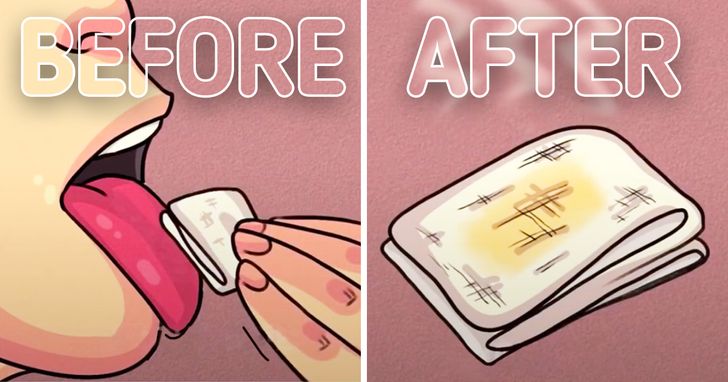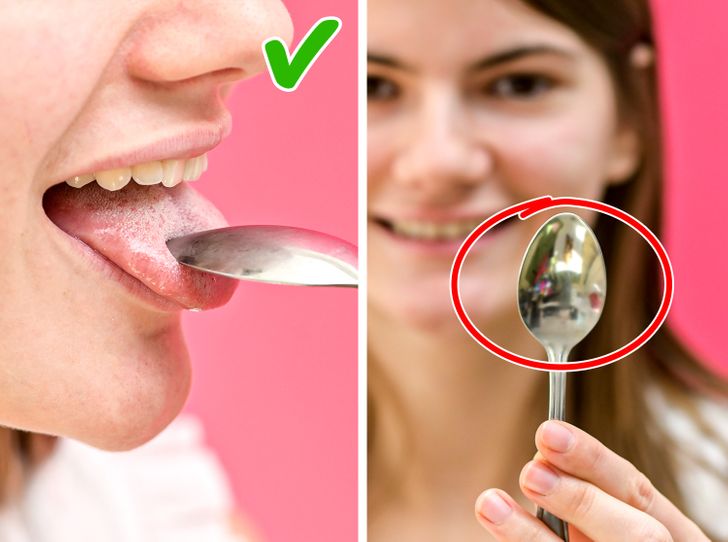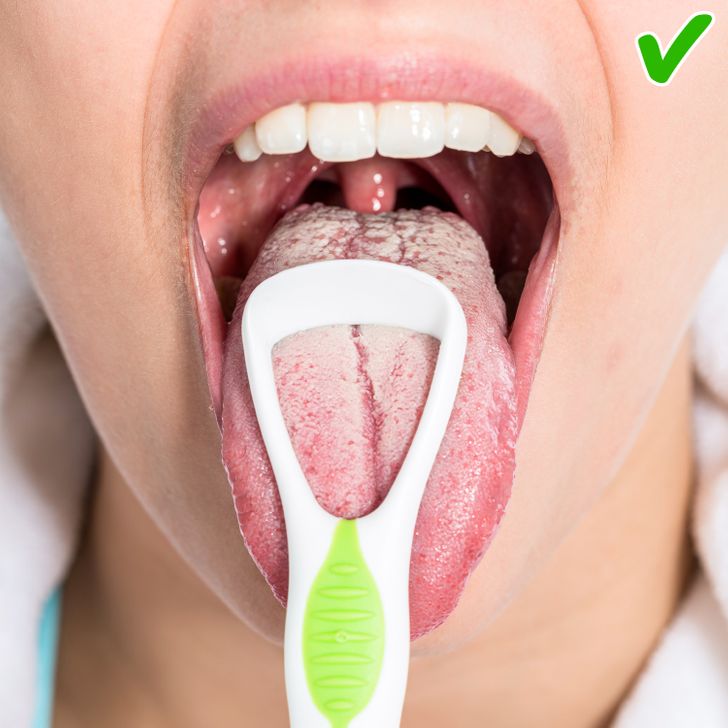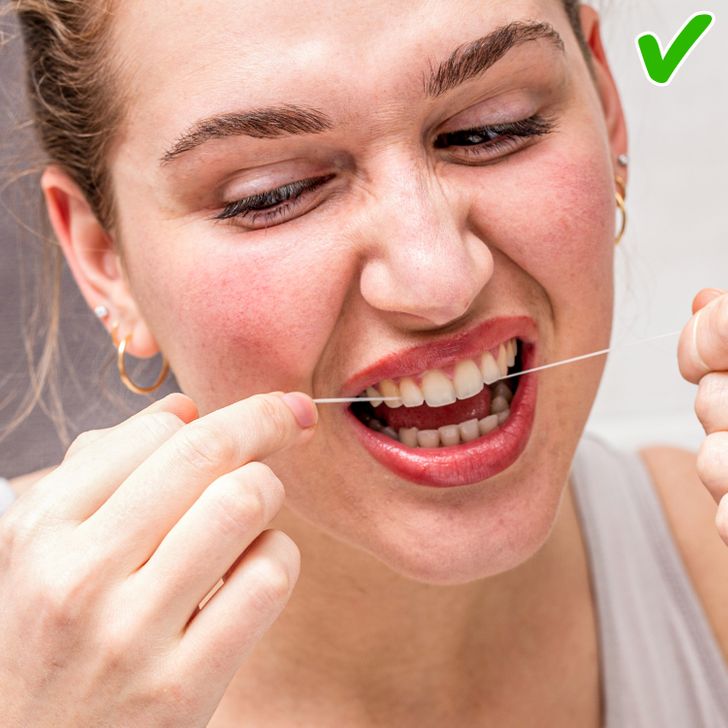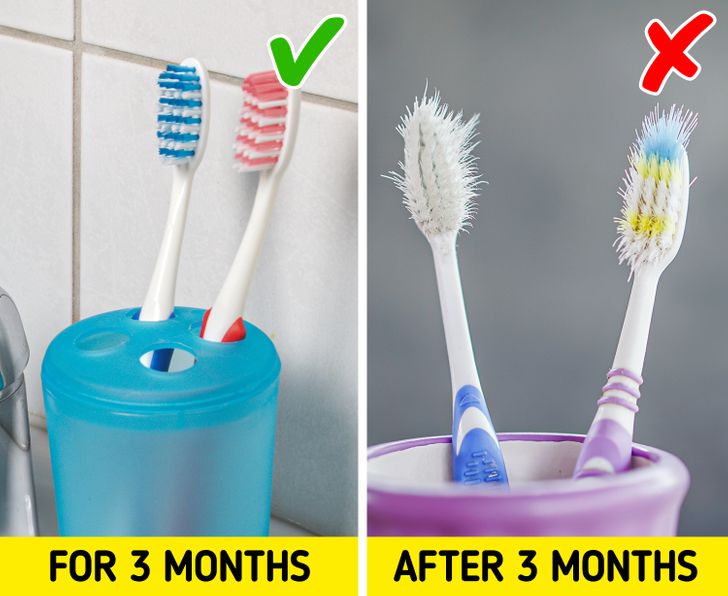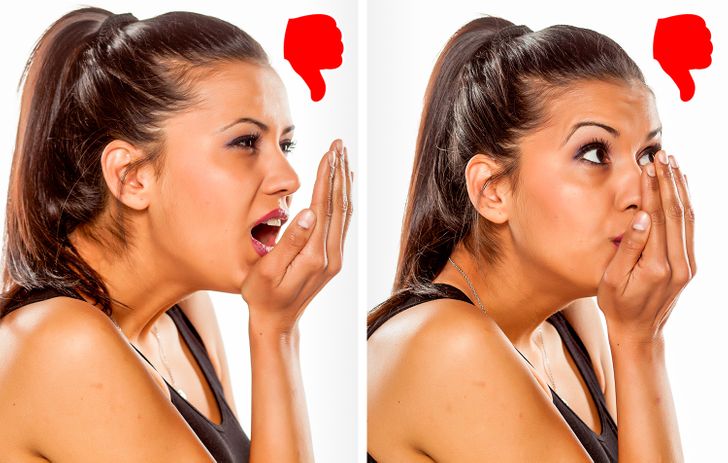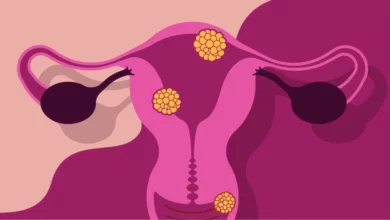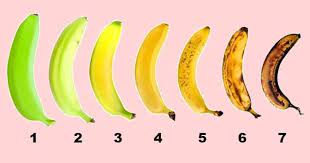Look at the gauze afterward. Does it have a yellow-ish coating? That means that there is also a smell and it is caused by a high level of
sulfide production. You can also try this test with a tissue.
5. Use a spoon.
Take
a spoon and scrape the back of your tongue with it. Leave it to dry for a bit and then smell it. You should also check for the coating you removed from the surface of your tongue.
6. Use a tongue scraper.
Scrape from the back of your tongue, and if you notice that the coating on your tongue is white-ish, then that means that a lot of
debris from food, bacteria, or dead cells have gathered on there. You should clean your tongue
regularly. If it still doesn’t go away within a few weeks, you should check with your doctor. A pink, clear tongue is
an indication of good oral health.
7. Use dental floss.
Choose odorless floss for this test so that it does not influence the result. Floss between your teeth — exactly as you do during your
daily routine — and sniff it afterward. This should reveal your own smell. Bad breath can originate from food stuck between your teeth as well.
8. Perform a special test at the dentist.
If you don’t feel comfortable with your breath or even if you go just for a routine check-up, ask your dentist for help. He can perform a halimeter test, which determines the level of volatile sulfur compound (VSC) in your mouth. A high level means an overgrowth of bacteria, either from your bowel or mouth.
Your dentist can also perform an organoleptic test, where he tests your breath through a plastic straw.
Causes of a bad breath
Bad breath can happen for
multiple reasons, from poor oral hygiene to gum disease and tooth decay. Not using the right toothbrush or not changing it every
3 to 4 months can increase your chances of developing halitosis. In some rare cases, bad breath can indicate some underlying health conditions, so go see a doctor if this persists.
Food is also important. If you follow a high-protein, low carbohydrate diet, you might experience the so-called “camel breath.” This happens because your body is in a state of ketosis, a metabolic state where your body breaks down ketones instead of glucose.
MYTH BUSTED: BLOWING INTO A CUPPED HAND DOESN’T WORK
You cannot actually tell if you have a bad breath by breathing into your cupped hands, which is a very popular gesture. The
reason is that bad breath comes from the gases produced at the back of your tongue, and when we talk, our smell originates from there. It doesn’t happen like this when we blow into our hands so we might miss it.

